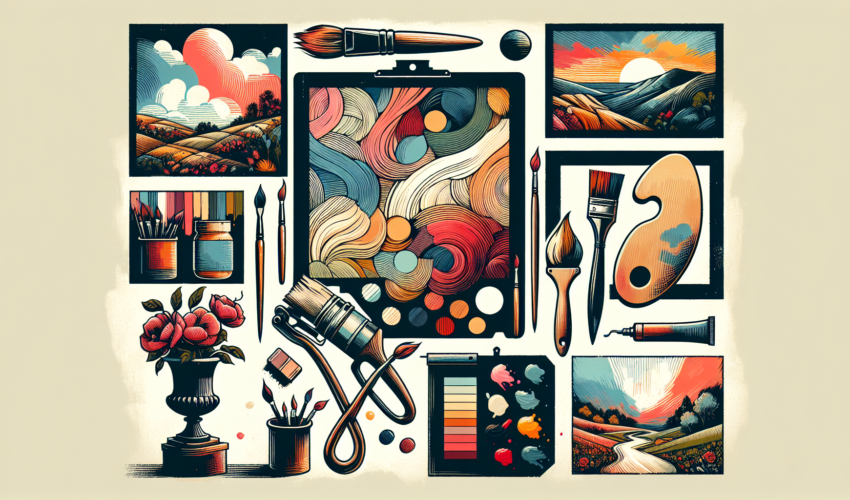Exploring the Art of Painting: Techniques and Inspirations
The art of painting, an ancient practice that spans back thousands of years, continues to captivate and inspire. It is a vibrant field that encompasses a wide range of techniques, styles, and inspirations, enabling artists to express their unique perspectives and emotions. From the textured strokes of Impressionism to the bold abstract forms of Modernism, painting offers an infinite spectrum of expressive possibilities. This article delves into various painting techniques and sources of inspiration, providing a gateway for both novice and seasoned artists to explore and deepen their craft.
Classic and Contemporary Painting Techniques
Understanding different painting techniques is crucial for any artist looking to explore the vast possibilities of their medium. Techniques can vary widely, depending on factors such as the type of paint used (oil, watercolor, acrylic, etc.), the surface being painted on, the desired texture, and the overall effect the artist aims to achieve. Below are some pivotal techniques that have shaped the art of painting through the ages:
- Oil Painting: Renowned for its versatility and richness, oil painting allows for a range of textures and layering techniques, giving depth and luminosity to the artwork.
- Watercolor: Known for its translucency and fluidity, watercolor painting creates a delicate wash of color, ideal for landscapes, portraits, and abstract works.
- Acrylics: Acrylic paints dry quickly and can mimic both oil and watercolor techniques, making them extremely versatile for experimentation.
- Encaustic: Involving the use of pigmented wax, encaustic painting achieves textured surfaces that add a tactile quality to the piece.
- Fresco: An ancient technique where pigments are applied to wet plaster, fresco painting is durable and is often associated with mural painting.
Contemporary artists often blend these traditional techniques or invent new methods to achieve unique effects, pushing the boundaries of what painting can be.
Inspiration in Painting
Inspiration for painting can come from virtually anywhere—nature, emotions, politics, social issues, or even purely from the imagination. It is the artist’s vision that transforms these inspirations into visual expressions. Here are some common sources of inspiration and how they can influence the art of painting:
- Nature: The natural world has been a perennial source of inspiration. Landscape painting, from the idyllic scenes of the Renaissance to the impressionists’ focus on light and color, reflects the profound influence of nature.
- Human Emotions and Experiences: Art can be a powerful medium to express complex emotional states and human conditions. Many artists use their work to explore topics of love, grief, joy, and social justice.
- Art History and Cultural Heritage: The rich tapestries of art history and cultural heritage offer endless inspiration. Artists may draw on the styles, techniques, or subject matter of past eras, reinterpreting them in contemporary contexts.
- Abstract Ideas: Abstract painting allows artists to explore concepts such as movement, space, and texture without the need for representational accuracy, opening up a world of creative possibilities.
Nurturing Your Artistic Journey
Embarking on an artistic journey involves constant learning, experimenting, and evolving. Whether you are honing your skills in a specific painting technique or seeking new sources of inspiration, it’s important to keep an open mind and allow your creativity to flow freely. Engaging with the artistic community, visiting galleries and museums, and studying the work of other artists can also provide valuable insights and inspiration. Remember, the journey of art is uniquely personal and always evolving. Embrace your path and let your passions guide your exploration of the art of painting.
Painting, in all its forms and expressions, remains a powerful medium for creativity and communication. By understanding its techniques and drawing inspiration from the world around us and within, we can continue to push the boundaries of what is possible in art and make our own contributions to this ever-evolving tradition.

